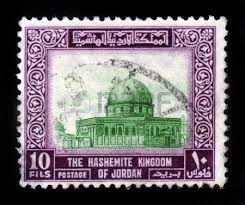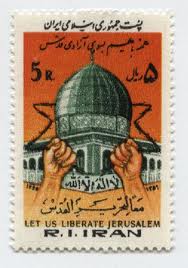7. Jerusalem, the Holy city of Islam
The Byzantine city of Jerusalem became a part of Muslim history in 638 with the victory of the warriors "bearing the Quran". In the next few centuries, the most prestigious city of the Levant in Judaism and a city of great spiritual influence in the medieval Christian West, also became the holy city of Islam. Jerusalem remained under Muslim rule for thirteen centuries with the exception of the Christian and Latin kingdom (1099-1187) and the British military occupation that followed after the mandate (1919-1948). Since 1967, Israel reunified the city by occupying East Jerusalem. In 1980, an important law was passed by the Knesset proclaiming Jerusalem the "one and indivisible capital" of Israel. Al-Quds is today a focal point of sacredness/holiness and a strong symbol to which Muslims are very attached. How did this sacredness develop? What are its foundations and its symbolic places? What is the place of Jerusalem today in the imaginary and ideology of Muslims?
The images of al-Quds that are symbolic of the Muslim conscience today can be found in a variety of objects, such as flags, carpets, souvenirs, stamps, and bank notes, throughout the Muslim world, especially since the intifadas (the Palestinian uprisings against Israel in 1987 and 2000). These images are representative of the sanctification of the esplanade. According to the Muslim tradition, the establishment of a sacred space is connected to the visit of the second Caliph 'Umar (634-644) in 638. He venerated the city and had deep respect for the Christian places of worship. Escorted by the grand Patriarch Sophronius, he reportedly went with humility to the Temple Mount to pray in "mosque" of David, which he purified after finding it in ruins under "a pile of manure that Christians had placed to offend the Jews". The first Caliphs of the imperial dynasty of the Umayyads (661-750) subsequently built two important monuments on the ruined site of Mount Moriah creating an esplanade, which was initially called el-Aqsa or haram al-sharif ("Noble Sanctuary").
The first stamp is the image of the Dome of the Rock (Qubbat, the cupola, al-Sakhra, the rock), erected in the same location as the sacred temple of the Jewish tradition, but in its centre. This is the first great monument of imperial Islam, fifty years after the conquest of Jerusalem. Its purpose is mysterious: the design of this curious octagonal monument is reminiscent of memorial shrines and monuments. At the time of its construction, this splendid monument appeared as a clear sign of the "competition" between the Anastasis (the Holy Sepulchre) and Islam.
The second stamp depicts the Friday mosque situated in the southwestern part of the esplanade. It was restored by the Fatimids in the eleventh century following damage caused by an earthquake. They cut down the size of several naves but it remained the largest mosque in Jerusalem. From this time onwards, it was called al-Aqsa (the distant mosque). The two monuments of this sacred esplanade prompted the creation of magical traditions, legends, and stories.
The crossing of the as-Sirat bridge
The first of you would pass with (the swiftness) of lightning […]. Then (they would pass) like the passing of the wind, then like the passing of a bird, and the hastening of persons would be according to their deeds, and your Apostle would be standing on the Path saying: Save, O my Lord, save. […] till a man would come who would find it hard to go along (that Path) but crawlingly. He (the narrator) said: And on the sides of the Path hooks would be suspended ready to catch anyone whom these would be required (to catch). There would be those who would somehow or other succeed in trasversing that Path and some would be piled up in Hell. […] it would take one seventy years to fathom the depth of Hell.
Hadith (narrated by Abu Huraira).
http://ahadith.co.uk/permalink-hadith-3243
(19/12/2014)
.
This famous hadith is attributed to Abu Hurayra, a companion of the Prophet, considered by Sunnis as an important figure in the transmission of the hadiths. He refers to the last judgment and the test of crossing the as-Sirat bridge. On that day, Isra'fil held onto the rock. The angel of the apocalypse blew the horn to announce the Resurrection. The Ka'ba and all the mosques came together on the esplanade. The scales (Mawazim), as symbols of divine justice, were placed on the four porticos before the Dome.
Waiting for its destiny, all of humanity marched on an hair-narrow bridge (as-Sirat), suspended above the valley of Death (Gehenna), between the Temple Mount and the Mount of Olives.








